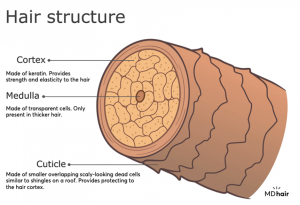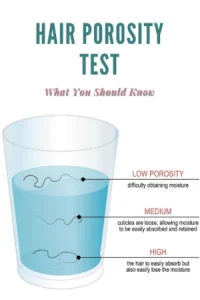Trending Article · 2 mins read
Karan Taneja
@admin
Glowing skin is a result of proper skincare

[vc_row][vc_column][vc_column_text]Lorem ipsum dolor sit amet, odio legere cotidieque ex quo, an noster evertitur vel, ei solet democritum est. Id mel tibique ancillae convenire. Admodum tacimates maiestatis his id. Sed everti accusam facilisi ne. Est diam debitis an, error recusabo id pro, quo eripuit civibus ut. Mel ut tamquam erroribus, ad nonumy vituperata mei.Et qui falli latine consequuntur. In appellantur concludaturque pro. Commune scriptorem ad pri, ut euripidis posidonium has. Eum ei verear dolorum. Duo quas viris delenit cu, dolores inciderint scribentur mel in. Option elaboraret et mea, sea eligendi insolens scripserit et, tantas assueverit liberavisse vim at.Prima modus erroribus id eum, te mea munere doming equidem. At per ullum facilisis omittantur, veri ponderum definitionem an eum. Mel purto adipisci eu, ex eum nisl consul, has virtute inermis ne. Eripuit delicatissimi in eos. Pri ut congue dolorem. Impetus consequat in qui, pro posse bonorum delicatissimi ad, veri voluptatibus ei qui.Munere accusamus ex has, pri vero populo voluptaria eum no, eos atomoru.
Et qui falli latine consequuntur. In appellantur concludaturque pro. Commune scriptorem ad pri, ut euripidis posidonium has. Eum ei verear dolorum. Duo quas viris delenit cu, dolores inciderint scribentur mel in. Option elaboraret et mea, sea eligendi insolens scripserit etsei.Est diam debitis an, error recusabo id pro, quo eripuit civibus ut. Mel ut tamquam erroribus, ad nonumy vituperata mei.Et qui falli latine consequuntur. In appellantur concludaturque pro. Commune scriptorem ad pri, ut euripidis posidonium has. Eum ei verear dolorum. Duo quas viris delenit cu, dolores inciderint scribentur mel in. Option elaboraret et mea, sea eligendi insolens scripserit et, tantas assueverit liberavisse vim at.Prima modus erroribus id eum, te mea munere doming equidem. At per ullum facilisis.Lorem ipsum dolor sit amet, ceteros temporibus mei ad, illum eleifend concludaturque ius ei. Ubique fabellas mel id, te qui vide summo viderer. Est no augue dolore nostro, no dictas meliore fuisset sea. His te sale rebum pericula, mazim consectetuer ius id. Ea his wisi labitur docendi.At per sumo aeque corpora, id sit putent volutpat consequat. Vis utroque facilisi te, et copiosae dissentiet qui. Vis prima minimum repudiandae ei, te exerci eruditi recusabo quo. Pri habeo scripserit et, qui at alii prompta oporteat. Fabulas erroribus an mel. Te fabellas gloriatur sit.Rationibus consectetuer mea no. Has placerat sapientem ei. An vis recusabo euripidis democritum, est primis accumsan oportere at. Ut ridens singulis oportere nec, harum voluptatum theophrastus mea ne. Nam corpora voluptaria deseruisse ei. Ei graeco legendos sed, qualisque neglegentur usu te.Cum omittantur liberavisse et, rebum mentitum placerat cum ne, est et assu.[/vc_column_text][/vc_column][/vc_row]https://www.youtube.com/watch?v=XHOmBV4js_E
Hair porosity is largely a genetic trait. But, with the best
hair care practices, you can manage your hair and boost its look
despite the porosity type.
Hair porosity just like other hair characteristics (texture,
type) is important to determine the best hair practice.
Don't be afraid to try out the recommendations and see which
tips your hair loves 😍 or those that it dislikes 🤮.
Once you find that “sweet spot” in your hair care routine, stick
to it.
Do you have product recommendations that work for your porosity
type, check out the review page and leave your product reviews.
Share your experience to build the community!
Let's talk hair!
Hair Structure
Types of Hair Porosity
Low Porosity Hair
Characteristics of Low Porosity Hair
Low Porosity Hair Care Tips
- Choose protein-free conditioners
- Make water your best friend
- Apply conditioner to wet hair
- Use heat when you condition
- Balance deep conditioning with protein and moisture
- Use leave-in- conditioners
- Focus on your scalp and roots when you shampoo
- Use protein conditioners to restore hair strength
- Use oils and butters
- Use gentle, cleansing shampoo
- Float test
- Slip and Slide Test
- Absorption or Water shed or Spray bottle Test
- Dry Test
Now, let's start with a bit of hair structure analysis to
understand what hair is like. That way the issue of porosity
would make sense to you.
 Source:
https://vova.edu.vn/
It has three layers:
The Cuticle: The outer layer of a
hair strand. The cuticle protects the hair with its scale-like
pattern of dead cells that overlap.
These cells are defenses that control the water content in the
hair fiber. They also shield the inner structure of the hair
from damage.
The Cortex: The thickest middle
layer of the hair strand. It contains the fibrous proteins and
the pigment (melanin) that determines your hair color.
The Medulla: The soft, fragile
inner layer of the hair. Think of the medulla as the marrow of
the hair shaft.
With the picture at the back of your mind, let's discuss the
types of Hair Porosity.
Source:
https://vova.edu.vn/
It has three layers:
The Cuticle: The outer layer of a
hair strand. The cuticle protects the hair with its scale-like
pattern of dead cells that overlap.
These cells are defenses that control the water content in the
hair fiber. They also shield the inner structure of the hair
from damage.
The Cortex: The thickest middle
layer of the hair strand. It contains the fibrous proteins and
the pigment (melanin) that determines your hair color.
The Medulla: The soft, fragile
inner layer of the hair. Think of the medulla as the marrow of
the hair shaft.
With the picture at the back of your mind, let's discuss the
types of Hair Porosity.
Hair Structure
The picture below shows what our hair looks like on a magnified scale.
Types of Hair Porosity
- Low porosity
- Medium porosity
- High porosity
Low Porosity Hair
The cuticle of low porosity hair is closed and flat, which means water (moisture) cannot be absorbed easily. This hair type is difficult to obtain moisture but when it does, it keeps it in and stays moisturized. Tapping from Byrdie’s interview with Trichologist Dr. Chamber Harris, “Low porosity [hair] is actually healthy hair that is not being moisturized correctly. The cuticle layer is intact, but you're not moisturizing it properly, so it becomes dry and tangled” So, how do you moisturize low porosity hair properly? First, let's see the distinct characteristics of low porosity hair.Characteristics of Low Porosity Hair
Through your hair's appearance and behavior you can tell if you have low porosity hair.- Your hair takes time to get saturated by water especially when you wash or re-moisturize.
- Hair products don't absorb easily they sit on top of your hair
- Air drying your hair seems to take forever
Low Porosity Hair Care Tips
1. Choose protein-free conditioners Protein-free conditioners are easily absorbed into your hair shaft and likely eliminate product build-up. Also, use conditioners that contain humectants (products that draw-in moisture) like glycerin, honey, and Aloe vera. 2. Make water your best friend Nothing beats water when it comes to hair care, so use moisture-rich products. Most importantly, don't forget that haircare isn't only about outer care, remember to hydrate from within. Drink a lot of water. Based on reviews from HairTalkers we recommend mention 2/3 hair product and add affiliate links here.Feel free to leave a comment if you've used any of these products. Or leave a verified review by joining the community.
Leave a reviewMedium Porosity Hair
The cuticle of the medium porosity hair isn’t too open nor is it too closed. It allows steady and moderate in-flow and out-flow of moisture through your hair. Medium porosity hair has a cuticle opening balance that's “just right”, so most people call it “normal porosity hair” (I’m not a fan of the name either). Like low porosity hair, it's also a genetic trait, however, bad hair care practices from heat damage or chemical processing can cause this porosity type to change.Characteristics of Medium Porosity Hair
- Moisture penetrates easily and it retains that moisture for a longer period of time.
- Usually looks glossy and shiny as it absorbs moisture and products.
- Air drying doesn't take too long.
- Styling or even colouring is easy and lasts for a good amount of time.
Medium porosity hair care tips
1. Balance deep conditioning with protein and moisture Since medium porosity hair tends to absorb moisture and products easily find a balance between moisture and protein. You can try deep conditioning with protein once a month. While you deep condition with moisture one to three times monthly. This solely depends on your hair, play around with it and see the frequency your hair likes. 2. Use leave-in- conditioners To maintain the balance of your medium porosity hair, you want to use leave-in conditioners in-between wash days to boost hydration and preserve your hair balance. 3. Focus on your scalp and roots when you shampoo Always use a sulphate free shampoo for your hair (no matter the porosity type) that gently cleanses your hair without losing its natural oils. When you shampoo, focus on the roots and scalp more to remove excess oil or product build-up especially if you style with lots of products.High Porosity Hair
High porosity hair is at the extreme of the porosity spectrum. Its cuticle is widely open so water easily penetrates in and goes out as fast. So, moisture comes in easily but it doesn't stay long enough to nourish your hair. This trait tends to leave your hair feeling dry quickly. While high porosity hair can be genetic certain factors can damage the cuticle creating gaps and making it more porous than normal. UV rays, bleaching, extreme heat styling practices, bleaching, and other chemical processes can make your hair become high porosity.Characteristics of High Porosity Hair
- It absorbs products and moisture fast.
- Air drying is super fast when compared to other porosity types
- It usually looks and feels dry, frizzy and brittle. It's prone to breakage.
High porosity hair care tips
The goal for high porosity hair care is to help your hair retain moisture and reduce or reverse the damage done to the cuticle. 1. Use protein conditioners to restore hair strength Use conditioners that contain keratin, silk protein and wheat to fix the brittle nature of high porosity hair and restore strength. See the reviews of good protein conditioners from Hair Talkers to find real product information. 2. Use oils and butters Heavy oils and butters can help seal the cuticle gaps and protect the hair layer. Choose products that contain shea butter, honey, almond and argan oil to help seal, moisturize and nourish your hair. See the products Hair Talkers recommend with their reviews. 3. Use gentle, cleansing shampoo Use a shampoo that cleans your hair without drying it out. Again, don't use sulphate shampoos, they are bad for hair TLC (tender loving care) business. Choose shampoos that'll clean, maintain and strengthen your hair to prevent breakage. We know what porosity is, its types and traits. How do you know what type of porosity you have?Hair Porosity Test
Knowing your hair porosity type can be done at home. Here are 4 simple tests you can use.- Float test
- Slip and Slide test
- Absorption or Spray bottle test
- Dry test
1. Float test
The float test is a widely known test to determine your hair porosity. How to do the float test- Get a transparent glass of clean water
- Take a clean hair strand (preferably freshly washed) from your comb or brush
- Drop the strand into the glass and allow it to sit for about 3-5 minutes.

Tips
The float test must be done with hair that is product-free, with no conditioners, butters or oils. The presence of products can alter the result. If you repeat the test for hair on different parts of your head. You might notice that the hair at the back of your head might give a different result. Record these results, they'll help you master your hair care.2. Slip and Slide Test
This test uses texture to determine hair porosity. You can pair this test with the float test to determine hair porosity type. How to do the Slip and Slide test- Hold a strand of your hair on your head between your dry fingers (index and thumb)
- Slowly glide your fingertips on the hair strand towards your scalp and take note of how your hair feels.
3. Absorption or Water shed or Spray bottle Test
The absorption test requires you to observe how long your hair absorbs water and products. How to do the Absorption test- Fill your spray bottle with water.
- Spray water on a small section of your hair and observe your hair.
4. Dry Test
The dry test is probably the most interesting test to read about and try at home. It compares the time it takes for your hair and body to dry. This test requires more patience when compared to the rest. So you might want to try it when you are not in a hurry.How to do the Dry Test for hair porosity
- Wash your hair with shampoo and rinse. Don't dry, we'll be using air to dry.
- Don't apply any hair products yet.
- Pour water on a part of your body. E.g your arms, legs or thighs (anywhere you like)
- Observe which dries first- your hair or your wet body.
The result
a. Low porosity- the body dries out first before hair b. Medium porosity- there is a balance between the time it takes for both hair and body to dry. c. High porosity- the hair dries out first before body There you have it! Try out these tests at home and record the results. Feel free to pair more than one test. If you're still having issues knowing your hair porosity type, don't worry. Take the hair test, to help you figure it out easily.Frequently Asked Questions
Hair porosity is largely a genetic trait. But, with the best
hair care practices, you can manage your hair and boost its look
despite the porosity type.
Hair porosity just like other hair characteristics (texture,
type) is important to determine the best hair practice.
Don't be afraid to try out the recommendations and see which
tips your hair loves 😍 or those that it dislikes 🤮.
Once you find that “sweet spot” in your hair care routine, stick
to it.
Do you have product recommendations that work for your porosity
type, check out the review page and leave your product reviews.
Share your experience to build the community!
Let's talk hair!

